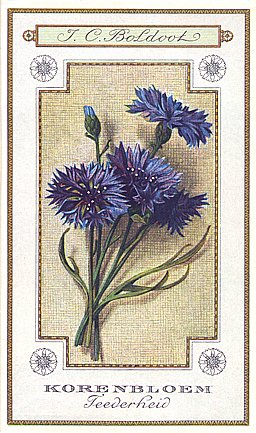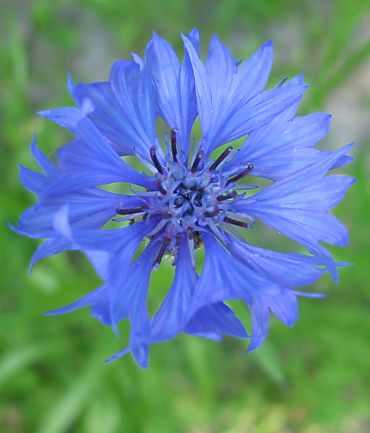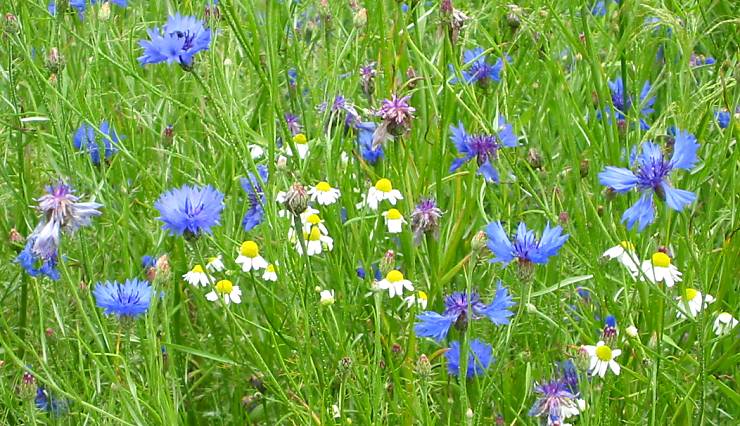


No. 20 - Korenbloem - Cornflower
Centaurea cyanus (Compositae)
De korenbloem zag men vroeger veel meer in korenvelden dan de laatste tientallen jaren; met bestrijdingsmiddelen worden de "onkruiden" eronder gehouden. Deze mooie blauwe bloem ziet men tegenwoordig vaker als sierplant in tuinen dan als wilde plant. Het intense blauw (zonder paarse ondertoon) wordt als bijzonder ervaren, er zijn niet zo heel veel Ŕcht blauwe bloemen, de meeste zijn toch eigenlijk paars of lila. Estland (met als vlag een horizontale driekleur blauw-zwart-wit) heeft deze bloem tot "nationale bloem" uitgeroepen, de kleur blauw in de vlag zou erop zijn ge´nspireerd.
Some decades ago Cornflowers occurred a lot more in the fields, but these "weeds" are kept at bay with chemical control. These days the beautiful blue flower is grown in gardens as an ornamental more often than tolerated as a wild plant among wheatcrops. The intense blue (without purple in it) is considered special, there aren't so many real blue flowers, most are in fact kind of purple or mauve. Estonia (with a horizontally striped flag in blue-black-white) has adopted this plant as "national flower", the blue colour in the flag being the same as that of the Cornflower.
Dutch 'Teederheid' (nowadays written as 'Tederheid') means 'Tenderness'.
Gedichten over korenbloemen / Poems about Cornflowers:
Drie kleine kleutertjes
The Perfect Blue













